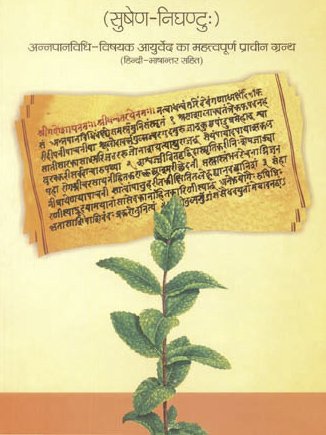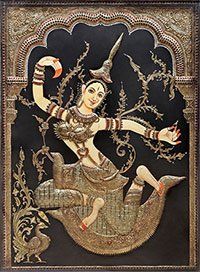Brimhaniya, Bṛṃhaṇīya: 7 definitions
Introduction:
Brimhaniya means something in Hinduism, Sanskrit. If you want to know the exact meaning, history, etymology or English translation of this term then check out the descriptions on this page. Add your comment or reference to a book if you want to contribute to this summary article.
The Sanskrit term Bṛṃhaṇīya can be transliterated into English as Brmhaniya or Brimhaniya, using the IAST transliteration scheme (?).
In Hinduism
Ayurveda (science of life)
Source: Wisdom Library: Āyurveda and botanyBṛṃhaṇīya (बृंहणीय) is the Sanskrit name for a group of medicinal plants, classified as being “nutritive and promoting corpulency”, and originally composed by Caraka in his Carakasaṃhitā sūtrasthāna IV. The name is derived from the word bṛṃha, translating to “nourishment”. It is a technical term used throughout Āyurveda. Examples of plants pertaining to this category include Rājakṣāraka (Asclepias rosea), Balā (Sida cordifolia) and Bharadvājī (Hibiscus vitifolius). The collection of herbs named Bṛṃhaṇīya is one of the fifty Mahākaṣāya.
Source: gurumukhi.ru: Ayurveda glossary of termsBṛṃhaṇīya (बृंहणीय):—Anabolic / promoters of tissue growth

Āyurveda (आयुर्वेद, ayurveda) is a branch of Indian science dealing with medicine, herbalism, taxology, anatomy, surgery, alchemy and related topics. Traditional practice of Āyurveda in ancient India dates back to at least the first millenium BC. Literature is commonly written in Sanskrit using various poetic metres.
Sports, Arts and Entertainment (wordly enjoyments)
Source: archive.org: Syainika Sastra of Rudradeva with English Translation (art)Bṛṃhaṇīya (बृंहणीय) or Bṛṃhaṇīyaka refers to “well-developed (birds)”, according to the Śyainika-śāstra: a Sanskrit treatise dealing with the divisions and benefits of Hunting and Hawking, written by Rājā Rudradeva (or Candradeva) in possibly the 13th century.—Accordingly, [while discussing the treatment of hawks]: “Finding the birds healthy and well-developed (bṛṃhaṇīyaka) by the use of the tonic medicines mentioned above, and when they look beautiful with their fresh-grown feathers and handsome with their wings which shine like sapphire, when they look charming with feathers on their breast looking like pearls, [...] their owner should then call them on auspicious day. [...]”.

This section covers the skills and profiencies of the Kalas (“performing arts”) and Shastras (“sciences”) involving ancient Indian traditions of sports, games, arts, entertainment, love-making and other means of wordly enjoyments. Traditionally these topics were dealt with in Sanskrit treatises explaing the philosophy and the justification of enjoying the pleasures of the senses.
Languages of India and abroad
Sanskrit dictionary
Source: Cologne Digital Sanskrit Dictionaries: Monier-Williams Sanskrit-English Dictionary1) Bṛṃhaṇīya (बृंहणीय):—[from bṛṃh] mfn. to be fattened or nourished, [Pāṇini 8-2 [Scholiast or Commentator]]
2) [v.s. ...] fattening, nutritious, [Suśruta]
Source: DDSA: Paia-sadda-mahannavo; a comprehensive Prakrit Hindi dictionary (S)Bṛṃhaṇīya (बृंहणीय) in the Sanskrit language is related to the Prakrit word: Biṃhaṇijja.
[Sanskrit to German]
Sanskrit, also spelled संस्कृतम् (saṃskṛtam), is an ancient language of India commonly seen as the grandmother of the Indo-European language family (even English!). Closely allied with Prakrit and Pali, Sanskrit is more exhaustive in both grammar and terms and has the most extensive collection of literature in the world, greatly surpassing its sister-languages Greek and Latin.
See also (Relevant definitions)
Starts with: Brimhaniyaka.
Ends with: Upabrimhaniya.
Full-text: Bimhanijja, Mahakashaya.
Relevant text
No search results for Brimhaniya, Bṛṃhaṇīya, Brmhaniya; (plurals include: Brimhaniyas, Bṛṃhaṇīyas, Brmhaniyas) in any book or story.